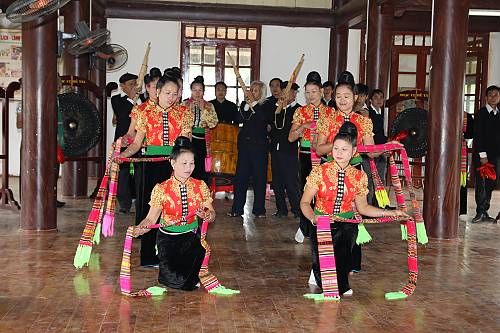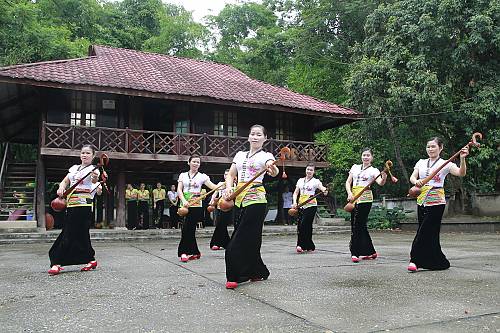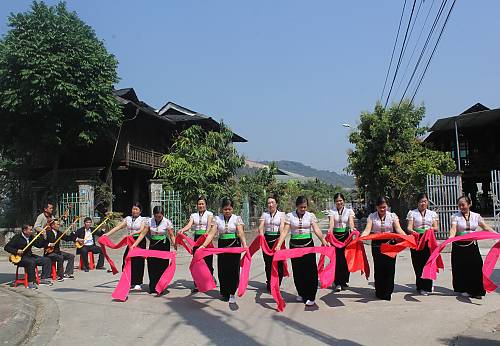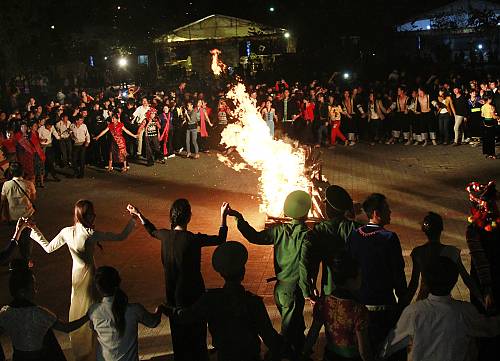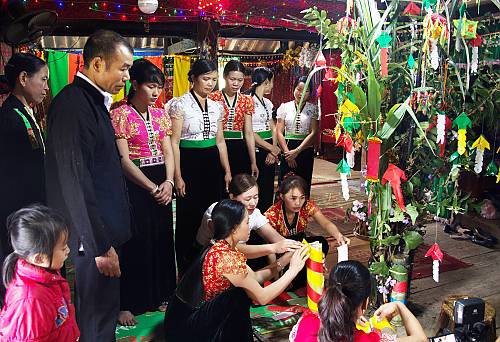Art of Xòe dance of the Tai people in Viet Nam
Inscribed in 2021 (16.COM) on the Representative List of the Intangible Cultural Heritage of Humanity

Xòe is a form of Vietnamese dancing with movements that symbolize human activities in ritual, culture, life and work. It is performed at rituals, weddings, village festivals and community events. There are three main types of xòe: ritual, circle and presentational. The ritual and presentational xòe dances are named after props used during certain performances. For instance, there is scarf xòe, conical hat xòe, fan xòe, bamboo pole xòe, music xòe, stick xòe and flower xòe. But the most popular form is circle xòe, wherein dancers form a circle and perform in harmony. The basic movements include raising and opening the hands, then lowering them and clasping the hands of the adjacent person. The dancers follow rhythmic footsteps, slightly arching the chest and leaning backwards. Although simple, the dance movements symbolize wishes for community health and harmony. The dance is accompanied by various musical instruments, including gourd lutes, mouth organs, drums, gongs, cymbals and reed flutes. The instrumental music blends with the vocals and the jingling of the silver jewellery hanging around the waists of the women. Transmitted from generation to generation within families, dance troupes and schools, the xòe dance has become a symbol of hospitality and an important identity marker for the Tai people in north-western Viet Nam.

